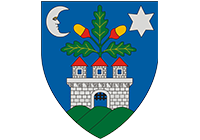ABOUT US
Disaster Management is an organization of the Hungarian Republic that protects people’s lives, goods and their environment in case of accidents, fires and other situations of catastrophe. Disaster management, besides its commissioned officers, involves the inhabitants to protect their own lives and goods.
Hungary has had to face several natural and man-made disasters that have caused serious harm and losses.
Should there be a flood or a war, losses can definitely be decreased if well-prepared organizations and teams are involved. Hungarian disaster management has inherited a well-prepared and well-structured civil protection and fire fighting organization having long decades’ of experience.
The new organization of disaster management was established on 1st January 2000. Its main tasks are preparation, prevention, management and reconstruction. The Veszprém County Directorate of Disaster Management has 3 Disaster Management Branch Offices (Ajka, Pápa and Veszprém) in 3 of the major towns of the county. The directorate also has supervisory rights over the fire departments of its region, 6 of which are professional ones (Ajka, Badacsonytomaj, Veszprém, Pétfürdő, Pápa, Balatonfűzfő) and 4 are voluntary ones (Balatonfüred, Sümeg, Tapolca, Zirc).
THE MAIN CHARACTERISTIC FEATURES OF VESZPRÉM COUNTY
Veszprém county is situated to the north of Lake Balaton, in the centre of the Transdanubian region.
 Territory: 4593 km2
Territory: 4593 km2
Population: 370,000
Density of population: 80.6/km2

Although Pápa and Ajka regions cover 65% of the territory of the county, the density of population is lower than the average here. This means that the rest of the county is more densely populated than the average. In the Várpalota region a lot of chemical factories and plants can be found, because of which the inhabitants have to face a constant risk.
Number of settlements in the county: 217 (14towns)
Neighbouring counties: Győr-Moson-Sopron, Komárom-Esztergom, Fejér, Somogy, Vas, Zala counties
The surface of the county is mostly hilly but there are also plain regions and bays.
The climate depends on the region where you are. The plain Kisalföld region has a slight impact of maritime climate, which means on the one hand that the weather is quite balanced. On the other hand it is the most windy part of the country.
In the Bakony Hills the climate is cooler than in any of the surrounding parts of the county and there is much more rainfall than anywhere else around. North-western winds often cause snowdrifts in winter.
Round Lake Balaton the climate is very pleasant, although northern winds coming from the Bakony Hills often cause sudden storms in summer. The number of sunny hours reaches as much as 2013 and the highest temperatures often exceed 30 °C.
Waters
There are no major rivers in the county, we only have some km’s of the River Rába on the north-western border of the county. Flooding is not frequent on this part of the river.
In case of sudden showers brooks sometimes flood but they do not endanger human lives.
The biggest fresh-water lake of Central-Europe is situated in the southern part of Veszprém county. Its water surface is 596 sqkm, it is 77 km long and 14 km wide. Its average depth is between 3 and 4 m but the deepest point is 12m. Besides Lake Balaton there are several smaller natural and artificial lakes and ponds in the county.
Besides tourism, of course, Lake Balaton is also of high importance for the neighbouring settlements as it provides 70% of their drinking water. On the other hand, because of the huge water-surface, in case of chemical or nuclear disasters it can easily be pollute, thus endangering the inhabitants of the region.
Road network
No. 8 highway, which crosses the county in east-western direction, is an important transit-way for dangerous substance cargos (ADR). Roads no. 71, 72, 73, 82, 83, 84 also have heavy traffic. Round Lake Balaton the increasing number of tourists may lead to a growing amount of accidents in summer.
Railway network
The Budapest-Szombathely railway line crosses the county. The stations of Hajmáskér and Várpalota may endanger the region due to loading and unloading a huge amount of chemical substances.
Air transport
On the one hand, the county does not have a civilian airport, on the other hand, Pápa does have a military airport, which is an important part of the NATO infrastructure. Besides this, there is a former military airport in Szentkirályszabadja, which is out of use at the moment. However, both airports could be targets of hostile attacks in case of military conflicts.
The industrial plants using, producing or storing huge amounts of chemical substances are to be found near Várpalota – in Balatonfűzfő, Peremarton and Pétfürdő. As the density of population is quite high in this region, the inhabitants face a high level of risk. Tourists arriving at Lake Balaton in the summer period also aggravate the situation as they do not know about the potential dangers and do not have a thorough knowledge of the surroundings. Civil protection has to pay special attention to these factors.
The chemical substances in question are chlorine, ammonia and acrilo-nitrile.
Nuclear disasters
On the one hand, there are no plants using or producing nuclear power in Veszprém county, neither a road is assigned for transporting nuclear waste. On the other hand, attention has to be paid to the fact that besides Paks, both Bohunice and Mohovce nuclear power plants may endanger us due to fall-outs from potential radioactive clouds.
Natural disasters
As it has already been mentioned, we are not endangered by floods. Storms, draughts and hails may occur anywhere at any time in the region. In winter, snowdrifts can hinder traffic on roads and railway. Some settlements may get isolated for 1 or 2 days due to unfavourable weather conditions.
In point of earthquakes, the so-called Mór Fault runs down to the north of Lake Balaton, which means that the region may face earthquakes from time to time. To make the situation worse, this may also affect the densely populated and industrialised Várpalota region. Thus it is most important to establish and function civil protection organisations here.
Due to former mining activity, there are settlements in Veszprém county, where ex-mining tunnels endanger inhabitants.
The settlements of Veszprém county are put into 4 groups on the basis of the danger-factors they have to face. The groups are as follows:
 Territory: 4593 km2
Territory: 4593 km2






